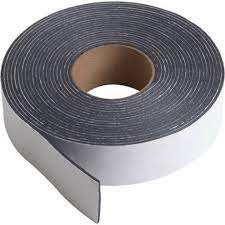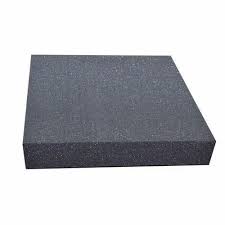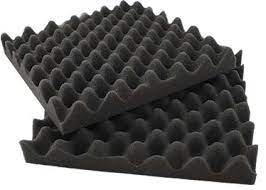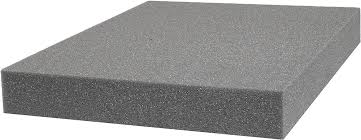DG Industry
In diesel generator industry, foam is used to reduce fuel sloshing, prevent static electricity, reduce noise levels, improve engine efficiency, provide insulation, and provide fire protection. The use of foam has become an essential part of the diesel generator industry, as it helps to ensure the safe and efficient operation of these generators.
Why Foam is Used in Diesel Generator Industry
Foam is also used in the design of diesel generator engines. It is used to reduce the noise levels of the generator by damping sound waves. The foam is placed in areas where the sound waves are likely to reflect or resonate, such as the engine compartment or the muffler. By reducing the amount of noise generated by the generator, the foam improves the comfort of the people around the generator and reduces the impact on the environment.
In addition to reducing noise levels, foam is also used to improve the efficiency of diesel generator engines. The foam is placed in the air intake system to help filter out dust and other particles that can clog the engine. This improves the air quality in the engine and ensures that it runs smoothly and efficiently. Foam is also used to reduce the amount of vibration generated by the engine. This improves the durability of the generator and extends its lifespan.
Foam is also used in the design of diesel generator enclosures. The foam is used to provide insulation to the enclosure, which helps to regulate the temperature inside. This is particularly important in areas with extreme temperatures, as it ensures that the generator remains operational regardless of the conditions outside. Foam can also be used to provide fire protection to the enclosure, which helps to prevent the spread of fire in the event of an emergency.
Another important application of foam in the diesel generator industry is in the design of fuel dispensing systems. Foam is used to prevent the formation of static electricity, which can be dangerous when fuel is being dispensed. Static electricity can cause a spark, which can lead to an explosion. Foam is used to prevent the formation of static electricity by dissipating any electrical charge that may build up during fuel dispensing.
Diesel Generator Industry Foam Applications
Fire retardant foam
Fire retardant foam is a type of foam that is designed to slow down or prevent the spread of fire. It is used in many industries, including the diesel generator industry, where it is used to provide fire protection.
In the diesel generator industry, fire retardant foam is used to protect the generator from fire in the event of an emergency. Diesel generators are often used in areas where there is a high risk of fire, such as construction sites or oil and gas fields. In these environments, a fire can quickly spread and cause significant damage to the generator, the surrounding equipment, and the environment.
Fire retardant foam is used in the design of diesel generator enclosures to provide a layer of protection against fire. The foam is sprayed onto the walls and roof of the enclosure, forming a thick layer that can withstand high temperatures and prevent the spread of flames. In the event of a fire, the foam will release a gas that displaces the oxygen in the enclosure, starving the fire of the oxygen it needs to continue burning.
Fire retardant foam is also used to protect the fuel tank of the generator. If the fuel tank is exposed to fire, it can rupture and cause a fuel spill, which can lead to a catastrophic fire. Fire retardant foam is used to prevent this from happening by forming a barrier between the fire and the fuel tank. The foam will also cool the fuel tank, preventing it from reaching its ignition temperature and reducing the risk of a fire.
Fire retardant foam laminate with aluminum foil
Fire retardant foam laminate with aluminum foil is a composite material that is used in the diesel generator industry to provide fire protection. This material consists of a layer of fire retardant foam that is sandwiched between two layers of aluminum foil. The aluminum foil provides a barrier that prevents the foam from igniting and also provides additional heat resistance. In the diesel generator industry, fire retardant foam laminate with aluminum foil is used to protect the generator and its components from fire. The material is used to line the walls and roof of the generator enclosure, forming a thick layer of protection that can withstand high temperatures and prevent the spread of flames.
The use of fire retardant foam laminate with aluminum foil in the diesel generator industry provides several benefits. Firstly, it provides enhanced fire protection compared to traditional materials such as wood or steel. This reduces the risk of damage to the generator and its components in the event of a fire. Secondly, it provides additional insulation, which can help to regulate the temperature inside the generator enclosure. This is particularly important in areas with extreme temperatures, as it ensures that the generator remains operational regardless of the conditions outside.
Composite Fire retardant foam
Composite fire retardant foam is a type of foam that is designed to provide enhanced fire protection. This foam is made up of a combination of materials, such as epoxy resins and carbon fiber, which provide strength and durability, as well as fire retardant properties.
In the diesel generator industry, composite fire retardant foam is used to provide fire protection to the generator and its components. The foam is applied to the walls and roof of the generator enclosure, forming a thick layer of protection that can withstand high temperatures and prevent the spread of flames. This foam provides enhanced fire protection compared to traditional materials, such as wood or steel, and can help to reduce the risk of damage to the generator and its components in the event of a fire.
Composite fire retardant foam is also useful in environments where there is a high risk of impact or vibration. The foam can be molded into various shapes and sizes, allowing it to fit snugly around the generator components and provide a cushion against impacts or vibrations. This can help to reduce the risk of damage to the generator and its components and prolong the life of the equipment.
Overall, the use of composite fire retardant foam in the diesel generator industry is an effective way to provide enhanced fire protection and improve the durability of the generator and its components. It is a reliable and durable material that can withstand harsh conditions and protect the generator in the event of a fire or impact.
Fire retardant profile foam
Fire retardant profile foam is a type of foam that is specifically designed to provide fire protection. This foam is made up of a combination of materials that have fire-retardant properties, such as polyurethane, and is formed into a profile shape that can be used to line the walls and roof of the diesel generator enclosure.
In the diesel generator industry, fire retardant profile foam is used to provide fire protection to the generator and its components. The foam is shaped to fit snugly around the generator components, providing a thick layer of insulation and fire protection. This helps to reduce the risk of damage to the generator and its components in the event of a fire. Fire retardant profile foam is also useful in environments where there is a high risk of impact or vibration. The foam can be molded into various shapes and sizes, allowing it to fit snugly around the generator components and provide a cushion against impacts or vibrations. This can help to reduce the risk of damage to the generator and its components and prolong the life of the equipment.
Overall, the use of fire retardant profile foam in the diesel generator industry is an effective way to provide fire protection and improve the durability of the generator and its components. It is a reliable and durable material that can withstand harsh conditions and protect the generator in the event of a fire or impact.
Fire retardant dampening foam
Fire retardant dampening foam is a type of foam that is designed to provide both fire protection and vibration dampening. This foam is made up of a combination of materials that have fire-retardant properties, such as polyurethane, as well as vibration-dampening properties.
In the diesel generator industry, fire retardant dampening foam is used to provide both fire protection and vibration dampening to the generator and its components. The foam is applied to the walls and roof of the generator enclosure, forming a thick layer of protection that can withstand high temperatures and prevent the spread of flames. The dampening foam helps to absorb vibrations, reducing the risk of damage to the generator and its components from impact or vibrations.
The use of fire retardant dampening foam in the diesel generator industry provides several benefits. Firstly, it provides enhanced fire protection compared to traditional materials such as wood or steel. This reduces the risk of damage to the generator and its components in the event of a fire. Secondly, it provides vibration dampening, which can help to reduce the risk of damage to the generator and its components from impact or vibrations. This prolongs the life of the equipment and reduces the need for frequent maintenance and repairs
FAQ's
Lorem ipsum dolor sit amet, consectetur adipiscing elit.
Lorem ipsum dolor sit amet, consectetur adipiscing elit.
Lorem ipsum dolor sit amet, consectetur adipiscing elit. .
Lorem ipsum dolor sit amet, consectetur adipiscing elit. .
Lorem ipsum dolor sit amet, consectetur adipiscing elit. .
Lorem ipsum dolor sit amet, consectetur adipiscing elit. .







